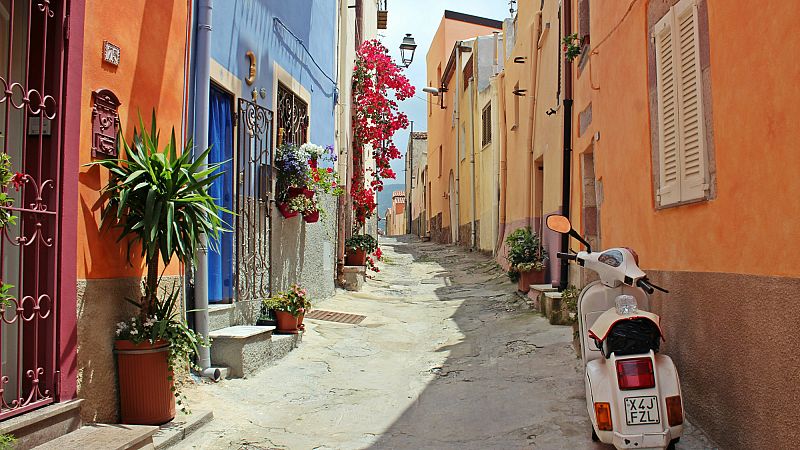Volcano Wines and Lemon-Scented Hikes: Discover These Must-Visit Italian Villages

Scattered throughout Italy's countryside are numerous villages boasting impressive architecture, culinary pleasures, and mysterious cultural practices.
Every year, these lesser-known gems vie for nationwide acclaim via 'Borgo dei Borghi' (Village of Villages), a cherished TV competition that has evolved into a significant cultural event.
The yearly contest, organized by RAI—the Italian state-owned broadcaster—features weekly installments that highlight one of the 20 chosen villages each year.
The show has turned into a source of travel motivation by sharing legends, oddities, and customs that render every village uniquely special.
Below are this year’s victors – selected by both viewers and a distinguished panel of historians along with tourism experts – and the reasons why they deserve a spot on your upcoming Italian adventure schedule.
Be amazed by the Baroque magnificence in Militello in Val di Catania, Sicily.
Situated on the northern slopes of the Iblean Mountains, Militello in Val di Catania stands as a prime example of Sicilian Baroque architecture and city layout.
The small village with slightly fewer than 7,000 residents is encompassed within UNESCO Its designation for the late Baroque towns located in the Val di Noto region.
After the catastrophic earthquake of 1693 that obliterated large parts of southeastern Sicily, Militello was reconstructed following the baroque artistic standards of the time. This gives the town an appearance reminiscent of an outdoor gallery showcasing 18th-century architecture.
This village houses over 20 churches featuring ornate stonework adorned with cherubs, saints, and detailed floral patterns.
Militello also hosts many aristocratic villas and palaces that formerly accommodated the noble families instrumental in shaping the village’s growth.
The village The region boasts a rich cultural scene as well, featuring saints' day celebrations that include parades, traditional musical acts, and shared feasts among the community.
Militello's win represents Sicily’s fifth success in the Borgo dei Borghi contest, after earlier victories by Gangi, Montalbano Elicona, Sambuca di Sicilia, and Petralia Soprana.
Discover the grand palace of Agliè in Piedmont.
Heading north into the province of Turin, the second-place town of Agliè stands out with its blend of noble elegance and everyday rural atmosphere.
The main attraction is the Castello di Agliè, an opulent estate that is included as part of UNESCO’s listing for the Savoy Residences.
This grand edifice, featuring daunting exteriors, intricate gardens, and lavishly adorned inside spaces, functioned as a key dwelling for the House of Savoy, the royal clan that governed the Kingdom of Sardinia before taking charge of the united Kingdom of Italy.
The castle lies at the center of the area. village , surrounded by historic piazzas that are still the setting for weekly markets, seasonal festivals, and daily social interactions.
The village became even more renowned as the main shooting spot for 'Elisa di Rivombrosa,' a widely watched Italian period drama.
Explore the age-old wine-making traditions in Vignanello, Lazio
The third place was awarded to Vignanello, showcasing the refined architectural and farming heritage of northern Lazio.
The village gained prominence mainly due to the Castello Ruspoli, an outstanding example of Renaissance architecture. Its gardens showcase some of the best instances of Italian landscaping from the 1500s and 1600s.
Vignanello is equally famous for its traditional methods. winemaking Traditions. The volcanic soil of the area, enhanced over centuries with layers of natural minerals, offers prime conditions for grape cultivation.
The yearly grape harvesting festival is a major event for the village, including wine tasting sessions along with food pairings and historical enactments.
Discover the untamed wilderness of the National Park near Aieta, Calabria
Perched high within the mountains of Calabria, Aieta resides in the wild expanse of the Pollino National Park.
Situated at an altitude exceeding 500 meters, this medieval village offers breathtaking vistas of the Tyrrhenian Sea. Its name aptly stems from the Greek term for "eagle."
Aieta's medieval character still stands prominently, featuring narrow cobblestone lanes meandering through homes constructed from locally sourced stones.
The 16th-century Renaissance palace in this village serves as an emblem of the prosperity and refined culture that modest mountain towns were capable of achieving during what was known as Italy’s pinnacle period for art and architectural brilliance.
Situated inside the Pollino National Park, Aieta serves as an excellent starting point for discovering its timeless woodlands, narrow canyons formed by swift-flowing rivers, and lofty summits that offer refuge to endangered species of fauna, including wolves eagles, and native flora.
Discover tranquility amidst the lemon orchards in Maiori, Campania.
Although the Amalfi Coast draws millions of tourists each year to its well-known attractions such as Positano And for a quieter option, Maiori provides a serene choice compared to Amalfi.
The village boasts a vast beach, which is uncommon for this coastline usually marked by tiny bays and steep cliffs.
Amidst the expanse of sand, vibrant structures of the village emerge, with lemon orchards ascending the rugged slopes adorned with trails for hikes.
Explore the Abbey of Santa Maria de Olearia, an impressive spiritual site sculpted right into the seaside cliffs. Within this structure, you'll find painted chapels and contemplative areas that have been shaped directly out of the rocky terrain.
The lemon groves in Maiori embody more than mere agriculture; they symbolize a cultural heritage that has molded both the scenery and economic lifeblood of the region. Amalfi Coast for centuries.
These stepped gardens, held up by dry-stone retaining walls, exemplify sustainable farming practices that boost output while maintaining the inherent attractiveness of the rugged shoreline landscape.
Post a Comment for "Volcano Wines and Lemon-Scented Hikes: Discover These Must-Visit Italian Villages"